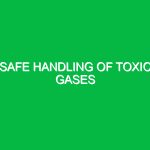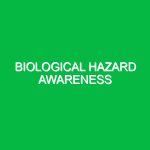Understanding radiation safety is crucial for anyone involved in fields where exposure to radiation is a possibility. From healthcare professionals to industrial workers, knowledge about radiation safety basics can significantly mitigate risks associated with radiation exposure. In this article, we will explore what radiation safety entails, identify potential hazards, discuss safety precautions, and review the regulations that govern this important aspect of the Health, Safety, and Environment (HSE) domain.
Understanding Radiation Safety Basics
Radiation safety refers to the protection of people from the harmful effects of ionizing radiation. Ionizing radiation has enough energy to remove tightly bound electrons from atoms, which can lead to molecular damage in living tissue. This damage can result in various health issues, including cancer. The relevance of radiation safety in the HSE domain cannot be overstated. It ensures that safe practices are implemented to protect workers, the public, and the environment from radiation hazards.
The fundamentals of radiation safety revolve around three key principles: time, distance, and shielding. These principles guide how individuals can minimize their exposure to radiation in any setting.
Identifying Hazards and Risks Associated with Radiation Safety
Radiation hazards are prevalent in several industries, including healthcare, nuclear energy, research laboratories, and construction. The potential risks associated with radiation exposure include:
1. Exposure to Ionizing Radiation
This is the most concerning type of radiation, as it can directly damage cellular structures. For instance, in a hospital setting, workers may encounter ionizing radiation when using X-ray machines or during radiation therapy. Even in small doses, repeated exposure can accumulate over time, leading to severe health consequences.
2. Environmental Contamination
In industries dealing with radioactive materials, there’s a risk of environmental contamination. Accidental spills or improper waste disposal can lead to widespread contamination, affecting local ecosystems and the health of communities. The Fukushima nuclear disaster is a stark reminder of such hazards, where radioactive materials were released into the environment, prompting a massive cleanup effort.
3. Equipment Failures
Radiation-producing equipment, if not properly maintained, can malfunction, exposing workers to unexpected radiation. Regular inspections and maintenance of equipment like radiographic devices are essential to prevent such occurrences.
4. Occupational Exposure
Workers in certain fields, such as radiology, nuclear medicine, and industrial radiography, are at a higher risk of occupational exposure. For instance, radiologists may spend long hours near X-ray machines, increasing their exposure risk. Understanding the cumulative effects of radiation over time is crucial for these professionals.
Safety Precautions and Best Practices
To ensure safety while working in environments where radiation is present, adhering to established safety precautions is vital. Here are some actionable strategies:
1. Implementing the Time, Distance, and Shielding Principles
These three principles are the cornerstones of radiation safety:
- Time: Reduce the time spent near radiation sources. If you must work close to a source, try to limit your exposure duration.
- Distance: Maintain a safe distance from radiation sources. The intensity of radiation diminishes with distance, so always keep this principle in mind.
- Shielding: Use appropriate shielding materials (like lead aprons in X-ray rooms) to protect against radiation. Understanding the right type of shielding for specific radiation types is crucial.
2. Personal Protective Equipment (PPE)
Wearing appropriate PPE, such as lead aprons, gloves, and safety goggles, is essential in environments where radiation is present. Regular training on the proper use of PPE should be conducted to ensure that all personnel are adequately protected.
3. Regular Training and Education
Continuous education about radiation safety practices can empower workers to recognize hazards and take necessary precautions. For example, I recall attending a workshop on radiation safety where we simulated emergency scenarios. This hands-on experience was invaluable in preparing for real-life situations.
4. Monitoring Exposure
Using dosimeters or radiation badges can help monitor individual exposure levels. Regular assessments of exposure data ensure that workers are within safe limits. For instance, in a nuclear facility, workers’ badges are checked weekly to ensure compliance with safety standards.
5. Emergency Preparedness
Having a comprehensive emergency plan is vital. This plan should include procedures for evacuating personnel, containing radioactive spills, and notifying emergency services. Regular drills can help ensure that everyone is prepared in the event of an incident.
Regulations and Standards Governing Radiation Safety
Various regulations govern radiation safety to ensure that exposure is minimized and safety standards are maintained. These regulations often vary by country, but some key organizations and standards include:
1. International Atomic Energy Agency (IAEA)
The IAEA provides guidelines and safety standards designed to protect individuals and the environment from the harmful effects of radiation. These guidelines inform best practices worldwide.
2. Occupational Safety and Health Administration (OSHA)
In the United States, OSHA sets and enforces standards to ensure safe working conditions. They have specific regulations concerning the use of radiation in various workplaces, requiring employers to implement safety measures and conduct regular training.
3. National Council on Radiation Protection and Measurements (NCRP)
The NCRP provides recommendations on radiation exposure limits and safety practices, playing a critical role in protecting public health.
4. Nuclear Regulatory Commission (NRC)
The NRC is responsible for regulating commercial nuclear power plants and other uses of nuclear materials. Their regulations ensure safety standards are met in handling radioactive materials.
Conclusion: The Importance of Radiation Safety Basics
Radiation safety is a fundamental aspect of ensuring health and safety in various industries. By understanding radiation safety basics, identifying potential risks, implementing safety precautions, and adhering to regulations, we can protect ourselves and the environment from the harmful effects of radiation exposure.
As the landscape of industries involving radiation continues to evolve, so too must our commitment to safety. The knowledge we gain and the practices we implement will not only safeguard our health but also contribute to the overall well-being of our communities. Remember, when it comes to radiation safety, vigilance is key.


